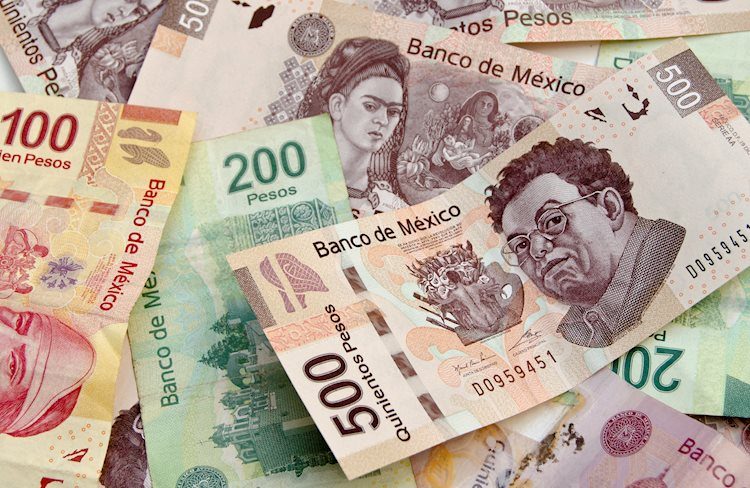The Mexican Peso (MXN) is currently experiencing a downtrend, although it appears to be finding a floor, with support from factors such as the weakness of rivals like the US Dollar and uncertainty over Mexico’s monetary policy direction. Last week, the Peso lost between 1.3% and 1.6% in its most traded pairs, extending the downtrend that began in April of 2024. The Peso’s depreciation is due to concerns over controversial new judicial reforms, uncertainty over the US presidential election, and the unwinding of the carry trade, which is now less attractive as the Peso trended lower.
Despite the continued depreciation of the Peso, last week saw a slower rate of decline compared to previous weeks. This can be attributed to stubbornly high headline inflation in Mexico, which is making the Bank of Mexico (Banxico) cautious about further interest rate cuts, as well as the weakness of its counterparts, particularly the US Dollar. While Mexican core inflation is falling back towards the Banxico’s 3.0% target, headline inflation remains elevated, reaching 5.57% in July. Banxico cut interest rates by 0.25% in August, but the dissent among board members suggests that further cuts may be uncertain.
Mexican payrolls data also indicates a slowdown in the labor market, with payrolls rising at their slowest pace in 40 months in August. This slowdown can be attributed to factors such as slowing economic growth, lower growth forecasts, and uncertainty surrounding government reforms and US presidential elections. The subdued employment in Mexico may prompt Banxico to be more aggressive in cutting interest rates despite high inflation, which could negatively impact the Peso.
At the moment, one US Dollar buys 19.94 Mexican Pesos, with EUR/MXN trading at 22.08 and GBP/MXN at 26.14. In terms of technical analysis, the USD/MXN pair is trading in a mildly bullish channel, pulling back from the 2024 highs and currently trading in the mid-19.90s. The overall trend remains bullish since April 2024, favoring more upside potential for the pair. A break above the current high could confirm a continuation of the bull trend.
The Bank of Mexico, also known as Banxico, is the country’s central bank responsible for setting monetary policy and preserving the value of the Mexican Peso. Banxico aims to maintain low and stable inflation within target levels, using interest rates as its main tool to guide monetary policy. The central bank meets eight times a year and is greatly influenced by decisions of the US Federal Reserve. The rate differential between Banxico and the Fed is a key factor affecting the Mexican Peso’s value, with higher interest rates typically strengthening the Peso and lower rates weakening it.
Overall, the Mexican Peso’s current downtrend is influenced by a combination of factors such as high inflation, uncertainty over monetary policy, and weakness in counterpart currencies. The Peso’s performance may continue to be impacted by economic indicators, central bank decisions, and external factors such as the US presidential election. Despite the current challenges, the Peso is showing resilience and may find support in higher interest rates and potential policy adjustments by Banxico.











